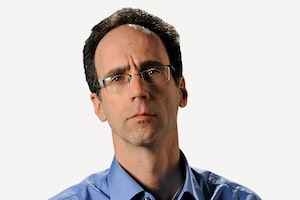The Supreme Court has upheld a federal law affirming that Indigenous peoples have a right to self-government under Canada’s Constitution, which includes the authority to write their own child-welfare laws.
The 2019 law breaks from more than 100 years of assimilationist policies, and from decades of a patchwork system declared discriminatory and underfunded by a human-rights tribunal. It provides a framework for Indigenous peoples to oversee the welfare of their own children, and says First Nations laws in this area take precedence over provincial child-welfare laws.
The Quebec government had referred the question of the law’s constitutionality to the courts, arguing that Ottawa exceeded its jurisdiction. The Supreme Court responded with an 8-0 ruling on Friday, saying that the law’s purpose is to protect the well-being of Indigenous children and families through culturally appropriate services, thereby advancing reconciliation. That, it said, is an overarching national project squarely within Ottawa’s jurisdiction.
Indigenous organizations applauded the ruling. “It’s a victory for Canada and First Nations,” said Assembly of First Nations National Chief Cindy Woodhouse Nepinak. “Our children will be raised by our people.”
Prime Minister Justin Trudeau called the decision “deeply significant,” and said the government had co-written the legislation with Indigenous communities “as a hugely important part of moving forward on reconciliation, to make sure that kids stay in their communities, and are given the support and safety they need.”
Quebec said in a statement it supports greater autonomy in youth protection, and stressed its disagreement is with the federal government and not First Nations or Inuit.
Quebec had argued that Ottawa in effect amended the Constitution on its own, illegally, by recognizing self-government as a constitutional right, and by giving primacy to Indigenous laws over provincial ones.
That set the stage for a precedent-setting battle over the meaning of self-government in Canada’s 1982 Constitution. The broadly worded Section 35 protects Indigenous and treaty rights that existed prior to 1982; its scope has evolved slowly over its four decades.
But the Supreme Court, in a seemingly paradoxical ruling, chose not to make a pronouncement on its view of the right to self-government under Section 35. Instead, stressing pragmatism, it said only that Ottawa has the authority to assert its view of the meaning of the right. That it took the court 14 months to issue its ruling from the time it heard the case – the average is six months – suggested to court watchers and participants in the case that the court chose consensus over a more far-reaching, but divided, ruling.
The court said its practical approach was intended to protect Indigenous children and families now, while avoiding slow and uncertain constitutional and treaty negotiations and court settlements.
“Nothing prevents Parliament from affirming … that Indigenous peoples have jurisdiction to make laws in relation to child and family services,” the ruling said. “It is equally open to Parliament to affirm that the laws of Indigenous communities, groups or peoples will prevail over other laws in the event of a conflict.”
The ruling was signed by “The Court,” signalling a unified voice intended to give its message greater weight.
Jason Madden, a lawyer for several Métis groups that intervened in the case, said the court’s unanimity will establish the ruling as seminal, and of lasting value. He said the ruling recognizes “Canada isn’t based on this false premise of ‘there’s only provincial jurisdiction and federal jurisdiction.’ This is finding a space for Indigenous people to assume the inherent jurisdiction they have, within the Canadian legal framework.”
Dwight Newman, a University of Saskatchewan law professor and author of books on Indigenous and constitutional subjects, said the court endorsed the federal law “without endorsing necessarily the constitutional theory on which the law is based.” He added: “It is quite tricky and something I’ll be thinking about for a while, in terms of how that works.”
Both Mr. Madden and Prof. Newman viewed the 14-month wait as an indication that the court had spent a long time trying to determine what it could reach a consensus on.
More than half of the children in foster care in private homes are Indigenous, though Indigenous children make up under eight per cent of all children in Canada, according to 2016 census data cited by the Supreme Court.
The court quoted the National Inquiry into Missing and Murdered Indigenous Women and Girls, which said child welfare has become, like residential schools, a site of assimilation and colonization, by forcibly removing children from their homes.
“For most of Canada’s history, lawmakers have wrongly imposed a policy of assimilation” on Indigenous peoples, the court said, pointing to intergenerational trauma caused by the residential schools and Sixties Scoop of Indigenous children. Last fall, Indigenous children and families reached a court-approved settlement with the federal government for $23-billion in compensation for discrimination in services, with another $20-billion in upgrades to the system.
In 2019, Quebec referred the question of the constitutionality of the federal law to the Quebec Court of Appeal. That court upheld the law in part in 2022. On self-government, it went further than the Supreme Court ultimately did, saying that control of child and family services is linked to the cultural survival and continuity of Indigenous peoples, and therefore protected by Section 35. But it ruled against giving Indigenous laws priority over provincial ones. Both Quebec and Ottawa appealed the ruling to the Supreme Court.
There were just eight judges who participated in the ruling because the ninth, Russell Brown, was asked to remove himself from all cases he had heard, during a disciplinary investigation. He later stepped down. Of the eight judges, three are from Quebec. The court has one Indigenous judge.
Natan Obed, president of the Inuit Tapiriit Kanatami, said there are too many Inuit in care, amounting to a continuing and tragic reality.
Cindy Blackstock, executive director of the First Nations Child and Family Caring Society, said it is now up to provincial, territorial and federal governments to provide the resources and supports for Indigenous children to grow up safely at home.
 Sean Fine
Sean Fine Kristy Kirkup
Kristy Kirkup